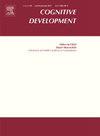正规音乐训练中的相对年龄效应
IF 1.8
3区 心理学
Q3 PSYCHOLOGY, DEVELOPMENTAL
引用次数: 0
摘要
获得音乐训练取决于各种因素,如家庭的社会经济地位和音乐背景,以及孩子对学习音乐的兴趣(与他们对经验的开放性有关)。在本研究中,我们展示了一个被忽视的选择偏差的额外来源:在实施选择过程时,同一队列中儿童的相对年龄。这种分组的结果被称为相对年龄效应,范围从学业成绩到自尊。在青少年体育运动中,人们观察到,出生在前两个季度的运动员比出生在后两个季度的运动员多。这项研究在两个样本中显示了西班牙音乐学院课程的类似不平衡:我们研究小组评估的参与者的主要样本(N = 322;第一季度出生的儿童占33% %,第四季度出生的儿童占21% %,V = .12)和由西班牙六所音乐学院的完全普查组成的二次样本(N = 2182;27 % vs. 24 %,V = .04)。当对那些选择最受欢迎的工具的参与者进行计算时,这种偏差更大。在我们的样本中,儿童和青少年的相对年龄独立于其他选择偏差的来源,如社会经济地位。此外,相对年龄效应在所有音乐学院课程中都是稳定的,这表明存在入学偏见和音乐学院入学考试缺乏调整的影响。本文章由计算机程序翻译,如有差异,请以英文原文为准。
Relative age effect in formal musical training
Access to musical training depends on various factors, such as socioeconomic status and musical background of families, and the child's interest in learning music (related to their openness to experience). In the present study, we show an additional source of selection bias that has gone unnoticed: the relative age of children within the same cohort, when a selection process is implemented. The consequences of this grouping are known as the relative age effect, ranging from academic outcomes to self-esteem. In youth sports, there has been observed an overrepresentation of athletes born in the two first quarters compared to those born later. This study shows a similar unbalance across Spanish music conservatory courses in two samples: a Primary Sample of participants assessed by our research group (N = 322; 33 % of children born in the first quarter vs. 21 % in the fourth quarter, V = .12) and a Secondary Sample comprised by the complete census of six conservatories in Spain (N = 2182; 27 % vs. 24 %, V = .04). This bias was larger when computed on those participants selecting the most popular instrument. In our sample, the relative age of the children and adolescents was independent of other sources of selection bias, such as socioeconomic status. Moreover, the relative age effect was stable across conservatory courses, pointing to an enrolment bias and the impact of a lack of adjustment in the conservatory entrance exam.
求助全文
通过发布文献求助,成功后即可免费获取论文全文。
去求助
来源期刊

Cognitive Development
Multiple-
CiteScore
3.20
自引率
5.60%
发文量
114
期刊介绍:
Cognitive Development contains the very best empirical and theoretical work on the development of perception, memory, language, concepts, thinking, problem solving, metacognition, and social cognition. Criteria for acceptance of articles will be: significance of the work to issues of current interest, substance of the argument, and clarity of expression. For purposes of publication in Cognitive Development, moral and social development will be considered part of cognitive development when they are related to the development of knowledge or thought processes.
 求助内容:
求助内容: 应助结果提醒方式:
应助结果提醒方式:


